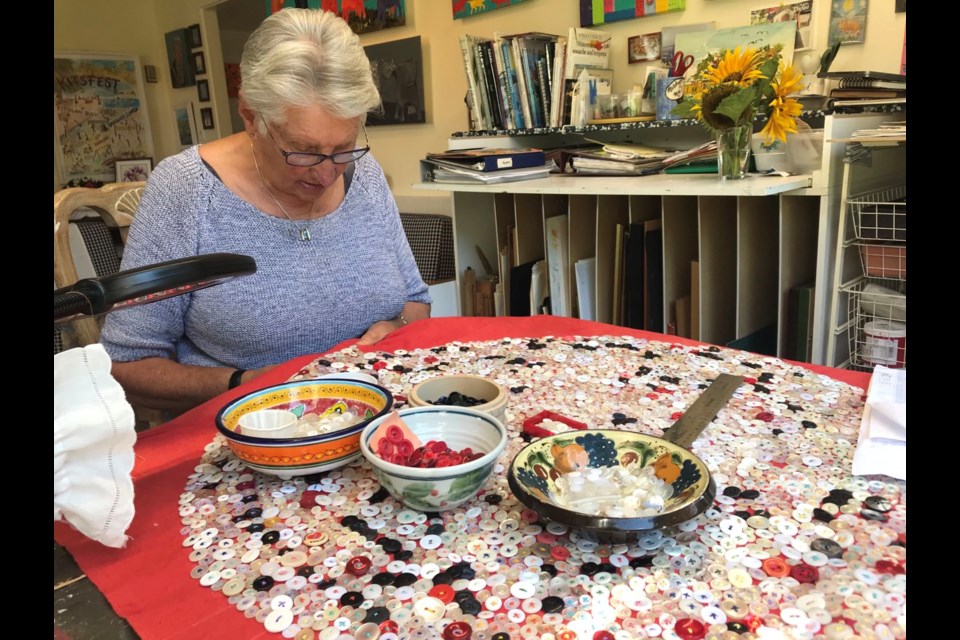When walking into Margreth Fry’s Richmond home, the first thing that catches your eye is a piece of red cloth, covered with buttons.
Upon closer inspection, you see more than 3,000 coloured buttons sewn in a circle, because “life is a circle,” explained the local artist, now in her 80s.
However, she resists the word “button.”
“These are not just buttons or numbers. I hope people can forget about buttons while seeing the work. These are the real people or families whose lives have been affected by COVID-19,” said Fry.
The red buttons represent the total number of British Columbians who have recovered from COVID-19, the white ones represent confirmed cases and the dark coloured ones symbolize those who’ve passed away from the virus.
Fry began her COVID project on March 18, the day the provincial state of emergency was first declared in response to the pandemic. Since then, she has been keeping track of the B.C. COVID-19 daily updates to sew the buttons and remember history.
She calls the project, “connection.”
While sewing a red button on the cloth, she said her heart fills with joy, because it represented recovery. However, every time she puts on a dark-coloured button, she’s in tears.
“It might only take me 10 minutes to sew 10 buttons, but, for me, it has been emotional,” said Fry, noting that she has spent over 100 hours in total and used more than one mile of coloured sewing cotton for the project.
Fry was born in Switzerland but has called Richmond home since 1970. For the past 20 years she has been painting and creating works of art. But Fry also has another long-time hobby — collecting buttons.
The first 1,000 buttons Fry used in the connection project are from her personal collection; the rest have come from Richmondites, British Columbians and people all over the world.
When her own supply of buttons was about to run out, Fry sent out self-addressed, stamped envelopes to friends asking for their buttons.
“Almost 20 per cent of the buttons I used in this project are from local residents. I feel loved every time I see an envelope filled with buttons arriving in my mailbox. If I had purchased these buttons from a local shop, then the work won’t have the same meaning — we wouldn’t be connected.
“People have asked me what I will do with my project. I don’t know. All I know is the project has put smiles on people’s faces and made more people like me feel connected to love and be loved. What else can you hope for in times like these?”



